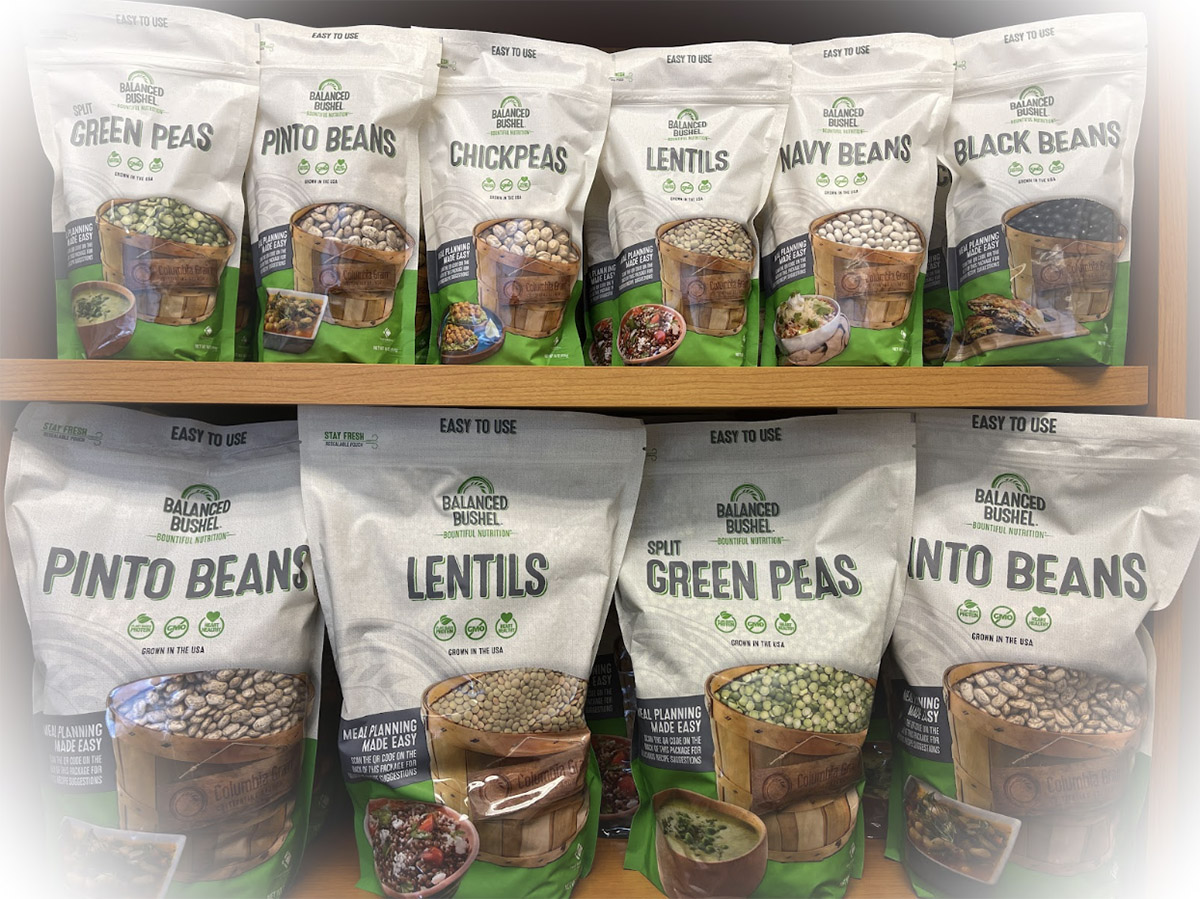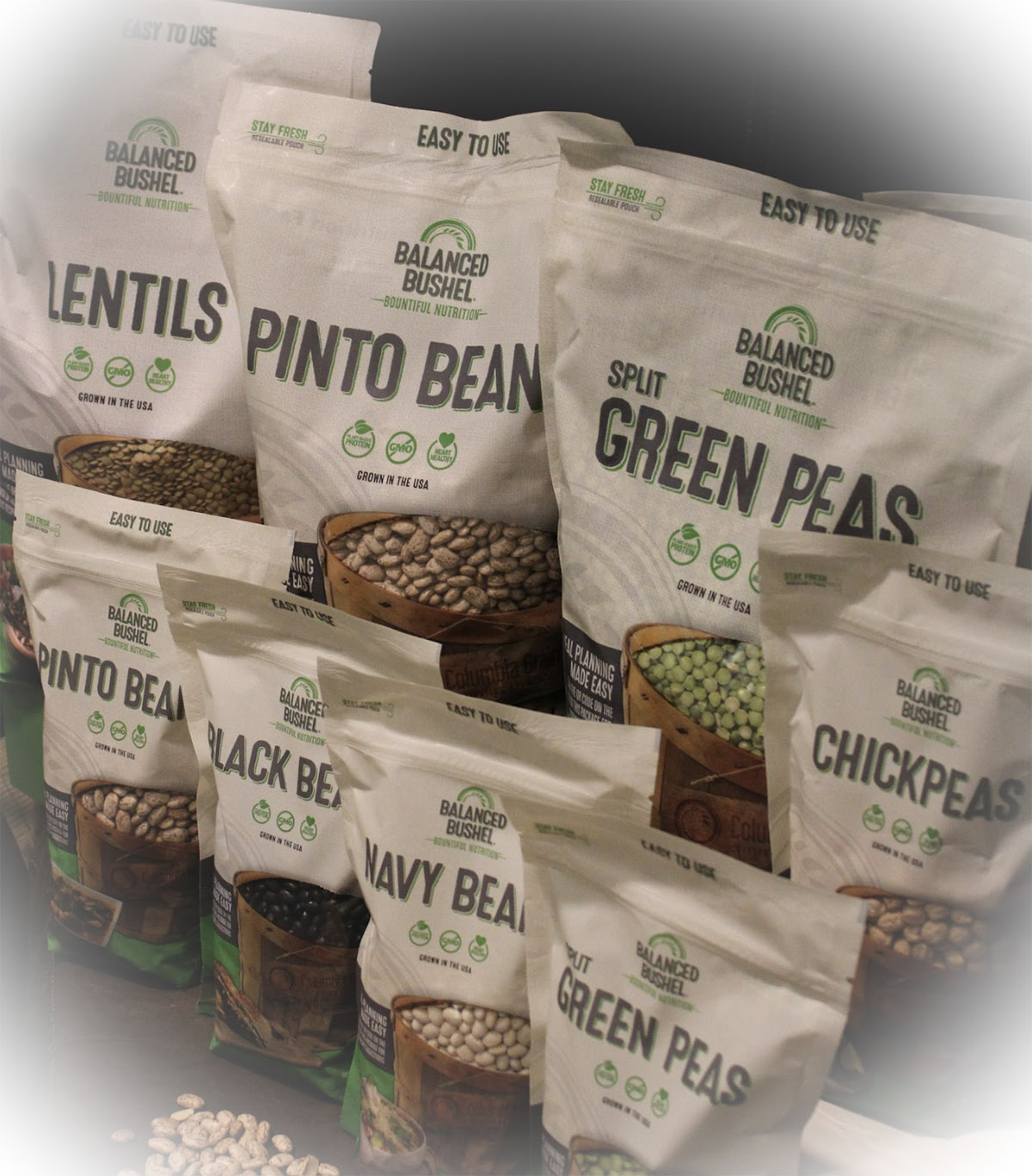March 28, 2023
Jeff Van Pevenage discusses Columbia Grain’s retail pulse range, Balanced Bushel, the evolution of the pet food market, and why lentils could become the truck drivers’ new favorite snack


Columbia Grain was originally a relatively large grain handling exporter, focused primarily on wheat, for the first 20 years of our existence, at least. We then moved into pulses in the early 2000's. As we've grown, the market has matured and we've been looking to add more specialty crops so as to utilize the smaller facilities that just weren't going to work for large-scale grain anymore.
We looked to add more pulses, oilseeds, canola and flax seeds. I wanted to create food supply chains for those products so that we can make a market for them — to buy them from producers, process them, then take them into a value-added type business.
After some more downstream processing of canola with a business called Montana Specialty Mills, we thought, "How do we create a business for peas, lentils, chickpeas, and dry beans?"
So, we started packaging on a small scale, and that was how we started that part of the business. We ran a contest amongst Columbia Grain’s 450 employees to give us names and design ideas, and they came up with Balanced Bushel.

The Balanced Bushel range
We have a facility located in Hastings, Nebraska, which is located perfectly for distribution around the US. We focused the business on creating split peas, lentils, pinto beans, black beans, chickpeas, dark red kidney beans, navy beans, and small red beans. With Balanced Bushel we’ve created a supply chain with the product that means you are buying from farmers and going straight to the consumer.
“With Balanced Bushel we’ve created a supply chain with the product that means you are buying from farmers and going straight to the consumer.”
It is still pretty small, but look, we are one of the largest processes of peas and lentils in the United States and we supply and deal with several packagers here – we’re not trying to get in and compete with them! We think we're trying to hit more of a niche market, maybe a higher-quality, higher-price, higher-margin type marketplace.
As a result we are looking at e-commerce – Amazon sales is our primary focus at this point in time, although we are having discussions with other distributors too.
The most popular are lentils and pinto beans, for sure.
Was it a surprise to you that these have been the most popular?
No, I think those are the products the consumers look at. Chickpeas are in there as well, but it doesn't seem like the US consumer is as fond of split peas at the moment.
Lentils have had a revival, you might say. People are getting more interested in eating lentils. You see more press about them in the food and health magazines in the United States these days.
Pintos are popular with the growing Latin American communities here, so their success doesn't surprise me. As far as chickpeas are concerned, one of the things I think deters today's generation is the cooking time. Lentils you can cook right out of the bag and in 45 minutes you’ve got a meal – with chickpeas it's a little tougher to do that.
A solution that seems to be more popular with the 25 to 30-year-olds is the pre-soaked chickpeas in ready to eat pouches where you can rip off the top but they have a Ziploc seal. People seem to like pouches — maybe they appear to have more value. Sometimes I think cans may give off a feeling of being cheaper.
Yes, absolutely. We wanted to bring to mind balanced diets and a balanced lifestyle, that's what we were trying to express.

Balanced Bushel is aimed at the niche health food market
From what I see around and in the food shows we've been attending, everyday consumers are looking to buy, cook, and utilize lentils. You see more and more home-made lentil soups, and in my own circles I talk to a lot of people who say how great they are on salads.
A partner we have in Montana has even made these ‘Salty Lentil Crunchers’ you can put on your salad – again, a nice resealable package. I happen to know these guys, and they've recently got a contract with a gas station convenience store that has over 500 stores across the country. They’re going to put up a little stand of them in each store. Most people usually buy chips, but you can see people going in and buying these instead. We’re seeing more and more of these kinds of products popping up.
Another important thing for lentils right now is definitely the growing pet food market.
It started about 10 years ago, that was when pet food started to be a real player for American pulses. It was almost driven by human trends — pet food companies began advertising non-grain products. The protein levels were coming from pulses and other vegetables. 10 years ago the market in the United States was around 35 to 40,000 tons of chickpeas and it’s just kept on a slow and steady climb.
Around four years ago it took a step back because of reports of myocarditis in dogs that they thought were coming from pulses. The US Dry Pea and Lentil Council and Columbia Grain put a lot of money towards a study that is in process right now, but really it was just a bump in the road – the market has just climbed right back up again. Chickpeas are a big player, as are any kind of pea, and some lentils. Those are the main pulses going into pet food products.
It also gives us a chance to sell the splits and chips from processing chickpeas, for example. I can remember in my career selling splits and chip chickpeas to India for $250 a tonne and today you can sell them in the United States for $1000 a tonne F.O.B.
I feel comfortable saying that the US market is somewhere in the neighborhood of 600,000 tons. When you look at the United States today, we're producing 250,000 tons of lentils, 750,000 tons of peas, and 300,000 tons of chickpeas – that's 1.3 million tons of which almost 45% of it is heading towards pet food markets.
We're also importing a fair amount of Canadian product into the US to cover some of the market. I remember telling Indian buyers five years ago that North America won’t be shipping a lot of peas to India like they used to. Today, the US consumes all the peas it produces.
Yes, I think the market will continue to grow, but probably not at the pace that we are at today. During Covid, everybody wanted a pet, but I think pet ownership will probably level out. The dollar spent towards better quality pet food will probably continue to grow, because people like to spend money on their pets and don't have a problem spending $80 on a bag of dog food, provided it's healthy.

Jeff Van Pevenage / lentils / Balanced Bushel / Columbia Grain’s / pinto beans / Chickpeas / pet food
Disclaimer: The opinions or views expressed in this publication are those of the authors or quoted persons. They do not purport to reflect the opinions or views of the Global Pulse Confederation or its members.